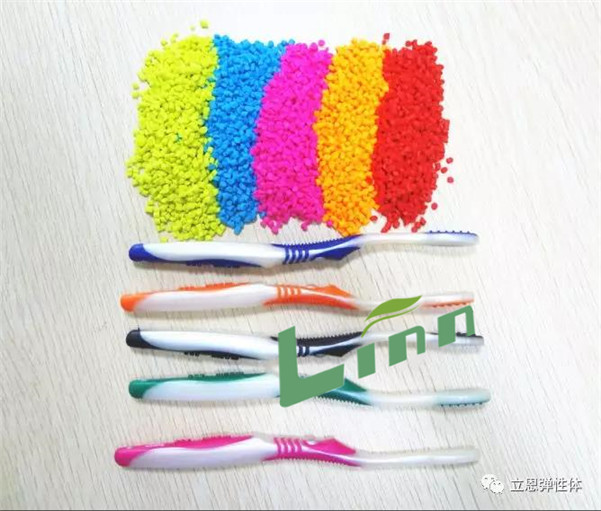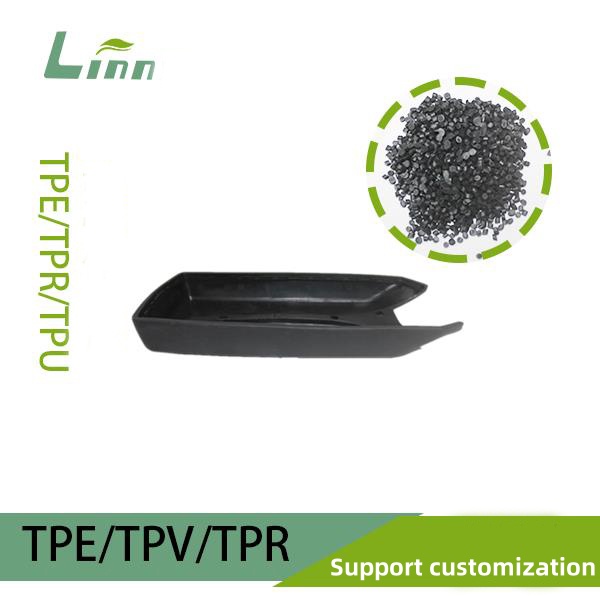I’ve been knee-deep in the plastics industry for nearly two decades, working with TPR (Thermoplastic Rubber) on everything from shoe soles to medical grips. One of the most frustrating issues I’ve seen pop up on injection molding lines is shrinkage—when your perfectly molded TPR part comes out smaller than expected, with sunken surfaces or distorted shapes. It’s a problem that can halt production, spike scrap rates, and leave you scrambling to meet client specs. If you’re staring at a batch of shrunken TPR parts fresh off the press, don’t sweat it just yet. In this article, I’ll share my hard-earned tricks to troubleshoot and fix shrinkage, plus ways to keep it from haunting your production line again. Let’s dive in with a clear plan to get your parts back on track.

Why Does Shrinkage Happen in TPR Injection Molding?
Shrinkage in TPR parts isn’t random—it’s a symptom of specific issues in material, process, or design. Over the years, I’ve pinpointed the main culprits behind this problem:
Material Properties: TPR, often based on SBS (Styrene-Butadiene-Styrene) or SEBS (Styrene-Ethylene-Butylene-Styrene), has a high shrinkage rate (typically 1.5-3%) due to its elastomeric nature and additives like oils or fillers.
Uneven Cooling: If the mold cools too quickly or unevenly, the TPR solidifies at different rates, causing internal stresses that lead to shrinkage or sink marks.
Improper Processing Parameters: Incorrect injection pressure, holding time, or melt temperature can prevent the material from filling the mold properly, resulting in undersized parts.
Mold Design Issues: Thin walls, inadequate venting, or poorly placed gates can restrict material flow or trap air, contributing to shrinkage.
Environmental Factors: High ambient humidity or inconsistent material storage can introduce moisture, affecting TPR’s flow and cooling behavior.
I once worked with a factory producing TPR toy components where shrinkage was so bad, nearly 20% of parts were rejected. After some digging, we found the mold’s cooling channels were clogged, causing uneven cooling. Understanding these causes is the first step to fixing the issue.
Immediate Fixes for TPR Shrinkage
If you’re dealing with shrunken TPR parts right now, here are practical steps to get your production back on track. These are methods I’ve used in real-world scenarios to salvage batches and minimize downtime.
1. Adjust Injection Molding Parameters
Fine-tuning your machine settings is often the fastest way to reduce shrinkage:
Increase Holding Pressure: Boost the holding (or packing) pressure by 10-20% to ensure the mold cavity is fully packed before the material cools. For TPR, typical holding pressure ranges from 50-100 MPa, depending on part thickness.
Extend Holding Time: Add 1-2 seconds to the holding phase to allow more material to fill the mold, compensating for shrinkage as the part cools.
Optimize Melt Temperature: Ensure the melt temperature is within the recommended range for TPR (usually 160-200°C). Too high, and the material degrades; too low, and it doesn’t flow properly.
Slow Cooling Rate: Increase cooling time by 10-20% to allow uniform solidification, reducing internal stresses.
I recall a case where a client’s TPR grips were shrinking at the edges. By increasing holding pressure from 60 MPa to 80 MPa and adding 1.5 seconds to the holding time, we cut shrinkage by 70% in a single shift.
2. Check and Adjust Cooling System
Uneven cooling is a major shrinkage driver:
Inspect Cooling Channels: Ensure mold cooling channels are clean and free of blockages. Use a flow meter to verify consistent water circulation.
Balance Cooling: Adjust cooling water temperature to 20-30°C for TPR molds, ensuring uniform heat dissipation across the mold.
Extend Cooling Time: If parts are still warm when ejected, add 2-3 seconds to the cooling phase to prevent premature shrinkage.
A factory I consulted for fixed a shrinkage issue in TPR soles by unclogging their mold’s cooling channels and lowering the coolant temperature by 5°C.

3. Address Material Issues
The TPR itself might be part of the problem:
Dry the Material: TPR can absorb moisture if stored improperly. Dry pellets at 60-70°C for 2-3 hours before processing to eliminate moisture-related flow issues.
Check Additives: Verify with your supplier that the TPR’s filler or oil content isn’t too high, as this can increase shrinkage. Request a Material Safety Data Sheet (MSDS) for details.
Test Batch Consistency: Run a small test batch with a different lot of TPR to rule out material variability.
4. Inspect Mold Condition
A faulty mold can exacerbate shrinkage:
Check Venting: Ensure vents are clear to allow trapped air to escape, preventing voids or sink marks. Vents should be 0.02-0.05 mm deep for TPR.
Examine Gate Design: Confirm gates are large enough (1.5-3 mm for TPR) and positioned to promote even material flow. Side gates work well for most TPR parts.
Polish Mold Surface: Rough mold surfaces can cause material to stick, leading to uneven cooling. Polish the mold if needed.
Note: Always test parameter changes on a small batch to avoid wasting material or damaging the mold. Document each adjustment to track what works.
Long-Term Strategies to Prevent Shrinkage
Fixing shrinkage in the moment is great, but preventing it altogether is the goal. Here are strategies I’ve implemented to keep TPR parts dimensionally stable over the long haul:
1. Optimize Mold Design
A well-designed mold is your best defense:
Increase Wall Thickness: Design parts with uniform wall thickness (2-4 mm for TPR) to ensure even cooling and reduce sink marks.
Add Ribs or Gussets: For thicker sections prone to sinking, incorporate ribs to maintain strength without increasing material volume.
Improve Venting and Gating: Work with your mold maker to add sufficient vents and optimize gate placement for smooth material flow. According to Plastics Technology, proper venting can reduce shrinkage by up to 30%.
Use Simulation Software: Tools like Moldflow can predict shrinkage during design, allowing you to tweak the mold before production.
I once helped a client redesign a TPR handle mold with better venting and a larger gate, cutting their scrap rate from 15% to 3%.

2. Standardize Processing Parameters
Consistency is key for TPR:
Create a Parameter Sheet: Develop a standardized settings chart for each TPR grade, including melt temperature, injection speed, holding pressure, and cooling time.
Monitor Machine Performance: Regularly calibrate injection molding machines to ensure consistent pressure and temperature control.
Train Operators: Conduct quarterly training on TPR processing to ensure staff understand how settings impact shrinkage.
3. Enhance Material Management
Proper material handling prevents shrinkage surprises:
Store Properly: Keep TPR pellets in a cool, dry environment (15-25°C, <50% humidity) in sealed, anti-static bags to prevent moisture absorption.
Track Batches: Use an inventory system to log batch numbers and supplier details, making it easier to spot material inconsistencies.
Work with Reliable Suppliers: Partner with suppliers who provide consistent TPR formulations and detailed COAs. Request samples before bulk orders.
4. Implement Robust Quality Control
Catch shrinkage early with thorough QC:
In-Process Inspections: Measure part dimensions after molding using calipers or CMM (Coordinate Measuring Machines) to detect shrinkage immediately.
Post-Molding Tests: Check parts for sink marks, warpage, or dimensional accuracy after a 24-hour stabilization period.
Supplier Audits: Visit your TPR supplier’s facility annually to review their quality controls and ensure consistent material properties.
Here’s a table summarizing these preventive strategies:
|
Strategy |
Action |
Expected Outcome |
|---|---|---|
|
Mold Design |
Uniform walls, better venting, simulation software |
Reduces sink marks and uneven cooling |
|
Processing Parameters |
Standardized settings, machine calibration, operator training |
Ensures consistent part dimensions |
|
Material Management |
Proper storage, batch tracking, reliable suppliers |
Minimizes material-related shrinkage |
|
Quality Control |
In-process inspections, post-molding tests, supplier audits |
Catches issues before parts reach customers |
Real-Life Case Study
Let me share a story that brings this all together. A few years back, I consulted for a factory making TPR seals for automotive parts. They were losing 25% of their output to shrinkage, with seals coming out undersized and showing deep sink marks. The client was under pressure to deliver to a major buyer, and rejections were piling up.
We tackled the issue systematically:
Immediate Fix: Increased holding pressure by 15 MPa and extended cooling time by 2 seconds, which reduced sink marks by 50% in the first trial.
Mold Inspection: Found clogged cooling channels and undersized vents. After cleaning and re-machining the vents, shrinkage dropped further.
Material Check: Discovered the TPR had inconsistent oil content. We switched to a more stable SEBS-based TPR from the same supplier.
Long-Term Plan: Redesigned the mold with uniform 3 mm wall thickness and added a side gate, while training operators on standardized settings.
Within two weeks, the scrap rate fell to 5%, and the client met their delivery deadline. They later reported a 20% boost in production efficiency thanks to the new mold and processes.

Additional Tips for TPR Injection Molding Success
Beyond shrinkage fixes, here are some broader insights to keep your TPR molding operation humming:
1. Invest in Operator Training
Shrinkage often stems from human error. I recommend:
Hands-On Workshops: Teach operators how to spot shrinkage early and adjust parameters like holding pressure.
Visual Aids: Post charts in the molding area showing ideal TPR settings for quick reference.
2. Leverage Industry Resources
Stay ahead of shrinkage issues by learning from experts:
Trade Shows: Events like Chinaplas showcase new TPR formulations and molding technologies.
Technical Journals: Read publications like Plastics Engineering for tips on optimizing injection molding.
3. Experiment with TPR Variants
If shrinkage persists, consider:
Low-Shrinkage TPR: Some suppliers offer TPR grades with reduced shrinkage rates (1-1.5%) for precision parts.
Alternative Materials: For high-precision applications, explore TPE or TPU, which may have lower shrinkage but higher costs.
4. Document Everything
Keep a log of every shrinkage incident, including:
Machine settings used
Material batch details
Mold condition
Fixes applied This data helps you spot patterns and refine processes over time.

Frequently Asked Questions
To round things out, here are answers to common questions I’ve heard from colleagues and clients about TPR shrinkage:
Q1: Can I fix shrunken TPR parts after molding?
A: Unfortunately, once TPR parts have cooled and shrunken, they can’t be reshaped without reprocessing. Focus on adjusting molding parameters to prevent shrinkage in future runs.
Q2: How do I know if my mold is causing shrinkage?
A: Check for uneven cooling (hot spots on the mold), clogged vents, or small gates. If parts shrink consistently in one area, the mold design is likely the issue.
Q3: Does TPR grade affect shrinkage?
A: Yes. SBS-based TPR often shrinks more than SEBS-based TPR due to higher oil content. Ask your supplier for low-shrinkage grades if precision is critical.
Q4: Can humidity cause TPR shrinkage?
A: Indirectly, yes. High humidity can cause TPR to absorb moisture, affecting flow and cooling. Dry pellets before molding to avoid this.
Q5: How do I convince my boss to invest in mold redesign?
A: Show data on scrap rates, production delays, and customer rejections caused by shrinkage. Compare that to the one-time cost of mold optimization to highlight long-term savings.
Wrapping Up
Shrinkage in TPR injection molding can feel like a relentless foe, but with the right tweaks to your process, mold, and material handling, you can tame it. From boosting holding pressure to redesigning molds, the solutions I’ve shared come from years of troubleshooting real production lines. My hope is that this guide arms you with the knowledge to fix shrinkage fast and keep your parts meeting specs. If you’re stuck on a tricky case or want to bounce ideas, feel free to share your situation—I’m all ears and ready to help you keep your molding operation in top shape!





